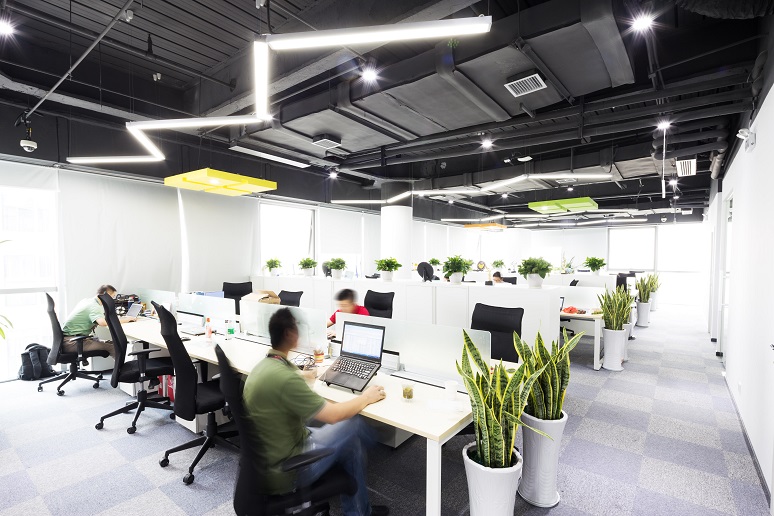Tracking all the changes and evolutions the workplace has undergone in the last several years might make anyone dizzy, but certain trends and themes have emerged through all the chaos, showing hints at what the future of work might look like.
In a
recent Harvard Business Review article, Gartner analysts Brian Kropp and Emily Rose McRae shed some light on what we might expect, with a list of 11 trends that’ll shape work in 2022. The trends run the gamut of workplace issues, showing that increased workplace volatility will drive continued change, spurred by new COVID variants, annual compensation not keeping up with inflation, longer-term technology transformations, and other factors.
Of the listed items, three in particular caught my eye:
- Workplaces will be defined by how they approach fairness and equity: Kropp and McRae note that, historically, the debate over in-office work vs. telework (the old hybrid work) focused around stereotypes of employee behavior; many people unfairly judged at-home workers as lazy couch-surfing slackers. While the pandemic put that notion to rest, questions on who has access to flexible work and what happens to employees (and their salaries) who relocate to locations with a lower cost of living remain, the authors argued.
- Automation will impact the role of managers: Over on our sister site No Jitter, we often discuss the benefit of automation through the lens of network automation and how it can free up time for IT professionals. But automation is also having an impact on HR professionals and those who manage employees. HR technology vendors have been automating repeatable managerial tasks like approving expense reports and time schedules, allowing managers to spend more time building stronger relationships with their employees, the authors stated. HBR research found that up to 65% of managerial tasks potentially can be automated by 2025.
- Workplaces get remote workers active: For many employees, the pandemic didn't just affect their mental health; it also proved detrimental to their physical health. To encourage more activity, workplaces will need to create new benefits and leverage technology to improve the health of remote workers, the authors said. They cautioned that these workplace wellness initiatives can come with a diversity, equity, and inclusion (DE&I) risk, in the form of employees with disabilities not being able to take part in them.
In addition to these trends, the authors also discussed some workplace staples from the past several years — managing hybrid work, reducing hours/days to improve employee experience, and using technology more systematically to track productivity. Additionally, hybrid work will complicate DE&I outcomes, and political, cultural, and social issues will continue to find their way into the workplace, the authors shared.
Let’s Not Forget Sustainability
These trends aren’t coming out of left field, as they’ve been trends forming for years, well before the pandemic in many cases. But I was a bit surprised that one trend, workplace sustainability, wasn’t addressed in more detail, outside of a mention of climate change. In its
annual report on millennials and Gen Zers, Deloitte found of the over 20,000 millennials and Gen Zer’s surveyed, 60% feared that their workplace wasn’t doing enough to combat climate change and was making it a lesser priority.
Sustainable office design and creating an eco-conscious workplace culture aren’t new topics, but as younger workers demand more workplace changes to address climate change, it should receive a bigger push in the year(s) to come.
A recent Business Insider article shared five tips to create a more sustainable work culture, with insight from Jeana Wirtenberg, associate professor at Rutgers Business School. The first suggestion is to incentivize employees to get active in eco-conscious activities and find ways to merge internal reward programs with sustainability. For example, Mastercard links compensation for senior employees with its priorities, which includes carbon neutrality, Wirtenberg shared.
Additionally, Wirtenberg recommends reimaging employee relationships and ensuring HR teams are engaged in supporting a sustainability-focused workforce. HR teams can accomplish this by hiring individuals with an interest in sustainability and training employees on sustainable best practices, Wirtenberg shared. Later in her list, Wirtenberg suggested tapping top talent within an organization to develop greener products and services and to make supply chains more sustainable. Considering many younger employees are passionate about combating climate change, these types of initiatives can provide an outlet for them to make meaningful and lasting change to their workplace.
Working Across Departments to Address These Challenge
Of course, all these trends point to the real challenge workplace leaders are facing, with another year of uncertainty looming above whatever comes next. However, this also provides the opportunity for WorkSpace Connect’s core audience of HR, IT, and real estate/facility professionals to collaborate and tackle these changes within their organizations. While HR professionals will be busy drafting policies and programs to keep employees happy and productive, IT professionals will provide the technical guidance to enable a host of working styles. IT professionals will also most likely start working closer with HR professionals to ensure HR technology needs are being addressed. And for any of the major workplace renovations that might lead to a more sustainable workplace, real estate and facility professionals will be at the ready.
If anything, the last two years have been the proving grounds for what comes next. While the “what’s next” is still unclear, workplaces will clearly have their hands full addressing these issues and many others moving forward.




